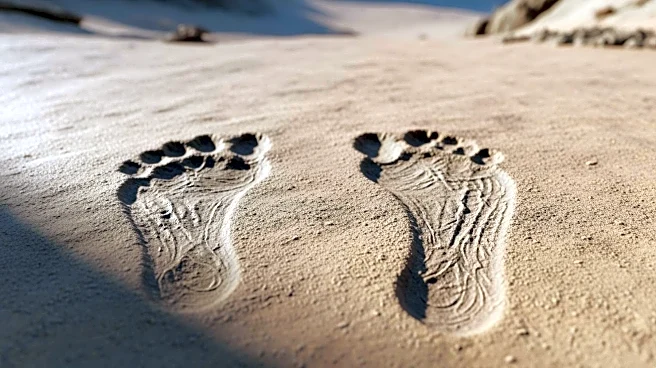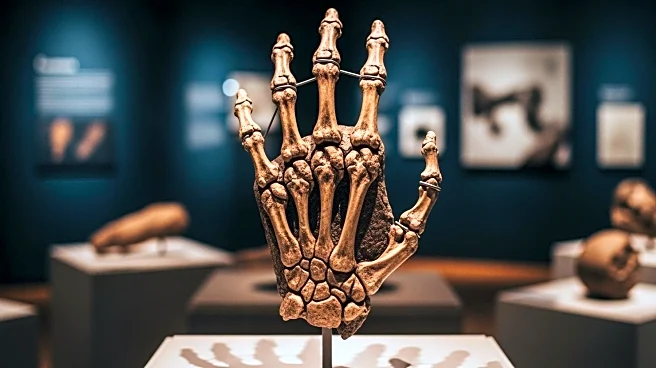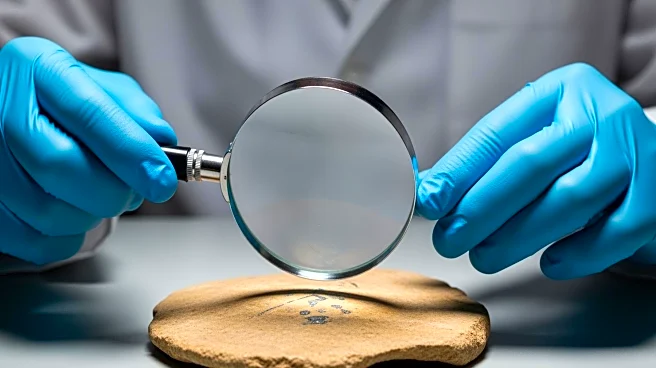What's Happening?
Recent fossil discoveries in the Turkana Basin of Kenya have provided new insights into the early hominin species Paranthropus boisei. Previously known for its large jaw and strong biting muscles, this
species was thought to be a simple plant-eater. However, the newly unearthed fossils, which include hand and foot bones, suggest that Paranthropus boisei had more human-like traits than previously believed. The fossils, dating back approximately 1.52 million years, were found by a team led by paleoanthropologist Carrie Mongle from Stony Brook University. The hand bones reveal a combination of strength and dexterity, with a long thumb similar to modern humans, indicating the potential for tool use. The foot structure suggests that Paranthropus boisei was adapted for bipedal walking, challenging previous assumptions about its lifestyle and capabilities.
Why It's Important?
This discovery is significant as it reshapes the understanding of human evolution, particularly the development of tool use and bipedalism. The findings suggest that dexterity and the ability to use tools were not exclusive to the Homo genus, indicating a more complex evolutionary path. This challenges the notion that tool use was a defining characteristic that separated early Homo species from other hominins. The coexistence of Paranthropus boisei and early Homo species over a million years ago highlights the diversity and adaptability of early hominins. This research provides valuable insights into the evolutionary processes that led to the development of modern human traits, emphasizing the gradual and multifaceted nature of human evolution.
What's Next?
The findings from the Turkana Basin are expected to prompt further research into the evolutionary history of early hominins. Scientists may focus on uncovering additional fossils to better understand the capabilities and behaviors of Paranthropus boisei. The study also opens up new avenues for exploring the interactions between different hominin species that coexisted during this period. Future research may aim to identify more specific behaviors and adaptations that contributed to the survival and evolution of these species. Additionally, the implications of this discovery may lead to a reevaluation of the evolutionary timeline and the factors that influenced the development of human-like traits.
Beyond the Headlines
The discovery of these fossils not only provides a glimpse into the physical capabilities of Paranthropus boisei but also raises questions about the cultural and social aspects of early hominin life. The potential for tool use suggests that this species may have engaged in more complex behaviors than previously thought, possibly including the use of tools for food procurement and other activities. This challenges the traditional view of Paranthropus boisei as a simple plant-eater and suggests a more nuanced understanding of its ecological niche. The research highlights the importance of interdisciplinary approaches in paleoanthropology, combining anatomical analysis with insights from archaeology and ecology to build a comprehensive picture of early human evolution.













